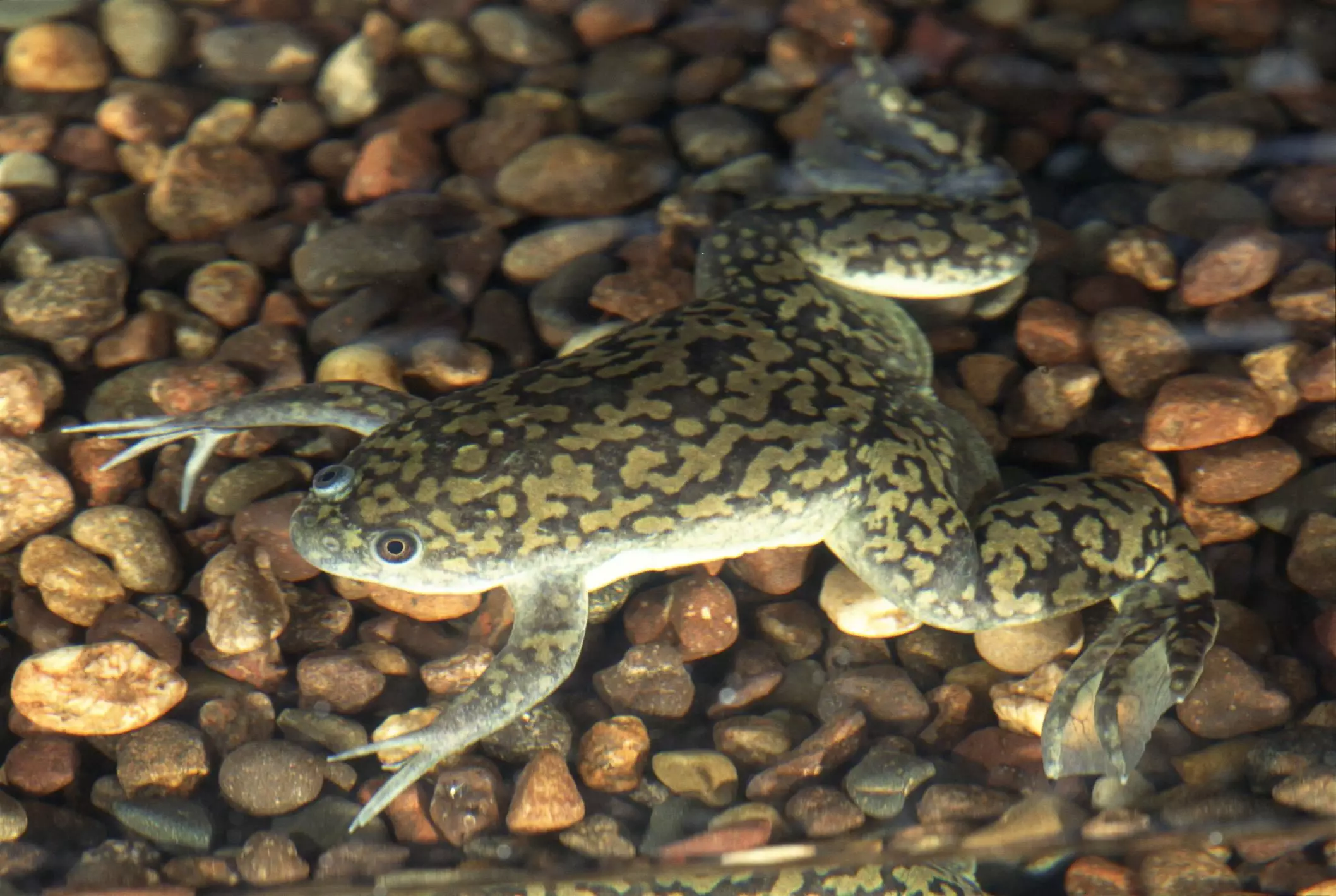When you think of unique and captivating pets, African clawed frogs (Xenopus laevis) are often overlooked in favor of more conventional animals like cats and dogs. However, these amphibians offer a fascinating glimpse into the world of aquatic life. Their intriguing physical features, including the signature claws on their hind feet that they use to tear apart food, set them apart from their more familiar counterparts. Moreover, their ease of care and remarkable adaptability make them appealing both as pets and subjects of study.
Physical Characteristics and Differentiation
At first glance, African clawed frogs might be mistaken for their smaller relatives, the dwarf clawed frogs. However, a closer inspection reveals distinct differences that underscore their uniqueness. African clawed frogs possess characteristic eyes placed on the top of their heads, allowing them to survey their surroundings while almost entirely submerged. The flat snouts give them a rather unassuming yet endearing appearance. With a size range between 2 and 5 inches, these frogs are robust and hardy, making them renowned not just among frog enthusiasts but also in scientific circles.
The three claws on each hind foot are not mere accessories; they are essential for foraging and tearing apart food, showcasing the evolutionary finesse that these creatures possess. Understanding these physical nuances is important for potential pet owners, enabling them to provide a habitat that closely mimics their natural environment.
Aquatic Adaptability and Invasiveness
Surprisingly, African clawed frogs are not just confined to their native regions of Sub-Saharan Africa; they have spread to four continents, often becoming invasive species. Their adaptability is impressive; they can thrive in diverse habitats, from cold climates where other frog species might struggle to survive, to urban environments with varying pollution levels. This flexibility, while fascinating, raises some environmental concerns, as they often compete with local species for resources and can disrupt ecosystems.
This resilience as predators is coupled with a rather opportunistic feeding habit, making them somewhat ruthless. They have been documented eating the offspring of their kind and other aquatic organisms, showcasing their role as top predators in various ecosystems. Such traits must be taken into account by potential owners who want to appreciate not just the beauty of these creatures but also the responsibility of keeping them in a controlled and ethical environment.
Creating a Suitable Habitat
Setting up a home for an African clawed frog is straightforward yet requires careful consideration. A minimum of a 10-gallon aquarium is recommended, with water depth controlled between 7 to 12 inches to ensure the frogs can easily access the surface for oxygen. Hobbyists must remember that although these amphibians do not require land areas, a secure lid is critical, as they are well-known escape artists, often leaping out of tanks when given the chance.
Water quality is vital; using dechlorinated water is a must, as the frogs are particularly sensitive to chlorine and harmful metal ions. A good filtration system is a topic of debate among enthusiasts. While some swear by gentle filtration to keep the water clean, others argue that the vibrations can cause unnecessary stress for the frogs. Regular water changes or careful filtration can strike a balance between cleanliness and comfort.
Feeding Practices and Health Considerations
Feeding African clawed frogs is relatively simple but requires careful attention to their diet. Floating reptile or amphibian sticks are common staples, complemented by live food options like waxworms, earthworms, and feeder fish. Variety in their diet ensures proper nutrition, but moderation is key; overfeeding can lead to health complications.
It is important to monitor your frog’s body shape, adjusting feedings if signs of obesity appear. Additionally, pet owners should be on the lookout for signs of stress or illness, such as cloudy eyes or lesions. Regular health check-ups with a qualified veterinarian are crucial, especially given their vulnerability to bacterial infections and parasitic infestations like red-leg disease—conditions that can arise primarily from subpar water quality.
Choosing the Right Frog for Your Home
If you are considering bringing an African clawed frog into your home, opting for a captive-bred specimen from a reputable source is essential. Such frogs are more likely to be healthy and active, sporting clear eyes and smooth skin. Healthy frogs should be lively swimmers that are not shy about feeding. Signs of lethargy or refusal to eat can be indicative of underlying health issues.
Expect to invest around $20 to $30 for a well-cared-for frog, but remember that the real investment is in caring for your new aquatic friend. With proper maintenance, African clawed frogs can delight enthusiasts for up to 15 years or more, making them a long-term companion in your aquatic adventure.
African clawed frogs represent a captivating blend of beauty, resilience, and complexity—making them not only a pet option but also an entry point into the enchanting world of amphibians. Their care demands a commitment akin to other beloved pets, yet the rewards of observing these creatures can be more than fulfilling; they can inspire a deeper appreciation for the intricacies of life beneath the water’s surface.


Leave a Reply